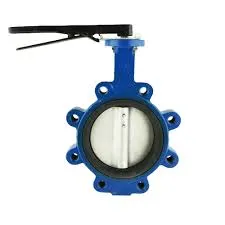ഡിസം . 18, 2024 16:22 Back to list
non return swing check valve
Understanding Non-Return Swing Check Valves
Non-return swing check valves, also known simply as swing check valves, are essential components in various piping systems. These valves are designed to permit fluid flow in a single direction while preventing backflow, thereby protecting equipment, maintaining system efficiency, and ensuring safety. This article explores the working principles, applications, advantages, and considerations for using non-return swing check valves.
Working Principles
Swing check valves operate on a simple yet effective mechanism. The valve features a hinged disc that swings on a pivot. When fluid flows in the designated direction, the pressure forces the disc to lift, allowing flow through the valve. Conversely, if the pressure from the opposite direction attempts to push the fluid back, the disc closes against the seat, effectively blocking any reverse flow. This unique design ensures that the system only allows one-way flow, preventing potential damage that can occur from backflow conditions.
Applications
Non-return swing check valves are commonly used in various industries, including water treatment, wastewater management, oil and gas, chemical processing, and HVAC systems. In water distribution systems, for instance, these valves are crucial for preventing backflow from consumer systems into the municipal supply, thus ensuring safe drinking water. In industrial processes, they safeguard pumps and compressors from damage due to unwanted reverse flow during shutdowns or other anomalies.
Additionally, these valves are widely used in irrigation systems to prevent back siphoning, which can undermine water quality and efficiency. Their robustness and reliability make them ideal for environments where fluid dynamics need to be strictly controlled.
Advantages
One of the primary advantages of non-return swing check valves is their simple construction, which makes them easy to install and maintain. They typically have fewer moving parts compared to other valve types, leading to reduced wear and tear over time. This durability allows for an extended service life and lower maintenance costs.
non return swing check valve

Moreover, swing check valves can handle larger volumes of fluid and are suitable for high-flow applications. Their design allows for minimal resistance to flow when in the open position, ensuring that pressure drops across the valve are kept to a minimum. This characteristic is particularly beneficial in applications where maintaining flow rate and system efficiency are critical.
Another advantage is their ability to operate effectively in systems with varying pressure conditions. They can handle both normal operational pressures and the occasional surges that might occur in any piping system, providing flexibility and resilience.
Considerations
While non-return swing check valves offer numerous benefits, there are a few considerations to keep in mind. The valve's effectiveness can be influenced by factors such as installation orientation, fluid velocity, and pressure conditions. For instance, these valves are best suited for horizontal pipe installations. If installed vertically, they may not close properly, leading to potential leaks.
Also, the selection of the appropriate size and material for the specific application is crucial. The material should be compatible with the fluid being transported, as corrosive substances can damage the valve over time. Common materials include stainless steel, cast iron, and PVC, each serving different purposes depending on the environment and fluid characteristics.
Finally, while swing check valves are founded on a simple operational principle, they can be susceptible to issues such as water hammer if the flow velocity is too high. Water hammer is a pressure surge that occurs when a fluid in motion is forced to stop or change direction suddenly, leading to potential pressure spikes that can damage the valve and connected equipment. Implementing proper system design and incorporating other pressure regulation mechanisms can mitigate this risk.
Conclusion
Non-return swing check valves are crucial for ensuring the integrity and efficiency of various fluid handling systems. Their straightforward design, ease of maintenance, and effectiveness in preventing backflow make them an indispensable component in many industrial and municipal applications. By understanding their operation, advantages, and considerations, engineers and facility managers can make informed decisions about incorporating swing check valves into their systems, ultimately enhancing performance and safety.
Share
-
Reliable Wafer Type Butterfly Valves for Every IndustryNewsJul.25,2025
-
Reliable Flow Control Begins with the Right Ball Check ValveNewsJul.25,2025
-
Precision Flow Control Starts with Quality ValvesNewsJul.25,2025
-
Industrial Flow Control ReliabilityNewsJul.25,2025
-
Engineered for Efficiency Gate Valves That Power Industrial PerformanceNewsJul.25,2025
-
Empowering Infrastructure Through Quality ManufacturingNewsJul.25,2025